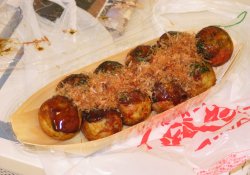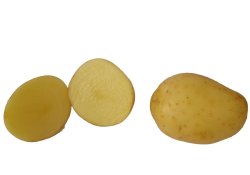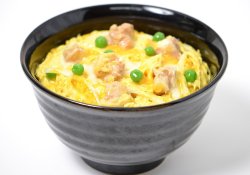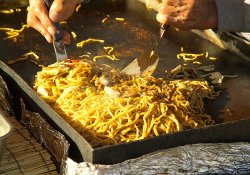Zaru Soba – Cold pasta Recipes and curiosities
On this page you will learn the recipe and some information about the Japanese dish Zaru Soba – Cold pasta Also known as zarusoba.
Table of Content - About - Origin - Information - Ingredients - Preparation - Related
All about zarusoba
Zaru Soba is a traditional Japanese dish consisting of cold pasta served with soy sauce and accompanying.It is a popular option for the hot summer days as it is refreshing and light.
The pasta used in Zaru Soba is made from sarraceno wheat and is known for its firm texture and unique taste. It is boiled in boiling water and then immersed in ice water to stop the cooking process and maintain its consistency. The pasta is then placed in a bamboo basket called "zaru" to leak and cool.
The soy sauce that accompanies Zaru Soba is made from a mixture of fish bouillon, soy sauce, mirin (a type of Japanese wine) and sugar. It is served in a separate container so that the pasta can be immersed in the sauce before it is consumed. In addition, it is common to add wasabi (Japanese strong root) or stinked onion to the sauce to give more flavor.
In addition to soy sauce, Zaru Soba is usually served with some accompanying ingredients, such as tempura (pudded and fried vegetables or seafood), kamaboko (fish cakes), nori (marine algae) and cooked eggs. These accompanying ingredients add texture and taste to the dish, making it more complete and balanced.
One of the best ways to enjoy Zaru Soba is to mix all the ingredients together before eating.This allows the pasta to be completely covered with the sauce and the accompanying mix, creating a delicious combination of flavors.
In addition to being a popular dish in the summer, Zaru Soba is also a healthy and nutritious option. Sarraceno wheat pasta is rich in fiber and protein, while the accompanying adds a variety of nutrients to the dish. In addition, soy sauce is a source of antioxidants and helps improve digestion.
In summary, Zaru Soba is a simple but tasty and refreshing Japanese dish. It is a great option for those looking for a light and nutritious meal, especially during the hot summer days. If you haven’t tried it yet, it’s definitely worth giving a chance to this traditional dish of Japanese cuisine.
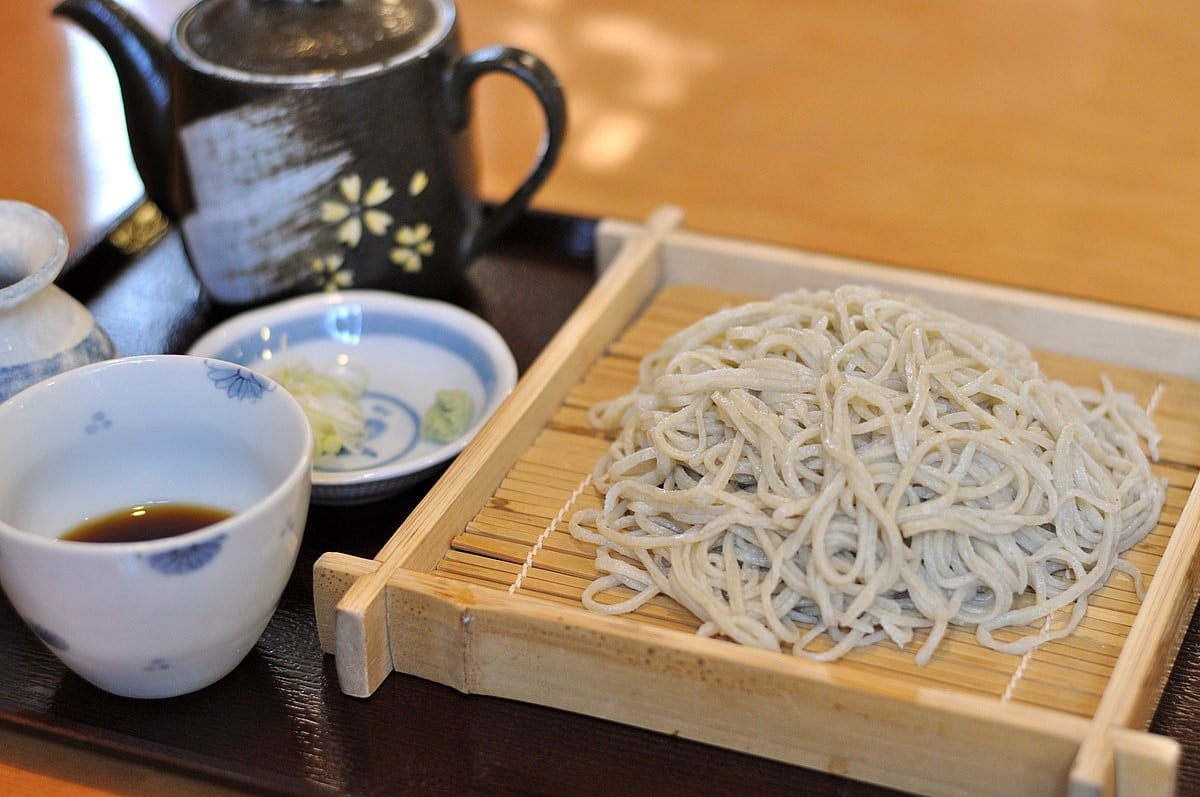
Origin and history of Zaru Soba – Macarrão gelado
Zaru soba is a traditional Japanese dish of cold pasta, served with soy sauce and wasabi. The origin of the dish dates back to the Edo period (1603-1868), when soba pasta became popular in Japan. At the time, the pasta was made with grain grain and consumed as a fast and cheap meal by the working class.
The name "zaru" comes from the bamboo basket used to leak the pasta after cooking, and "soba" means wheat-corn pasta. It is believed that the dish was created to be consumed during the hot summer days, when cold pasta and refreshing sauce were a light and refreshing meal option.
Over time, zaru soba has become a popular dish throughout Japan and is often served in restaurants specializing in soba.
About the recipe
- Name of the plate: Zaru Soba – Cold pasta
- Name of the dish in English: Zaru soba chilled noodles
- Name of the plate in Japanese: ざるそば
- Name of the Romanian dish: zarusoba
Information about preparation
- Time to prepare: 5 minutes
- Time of Cooking: 5 minutes
- Difficulty: MEDIUM
- It suits: 1 people
- Occasions: Summer, main meals
Ingredients – Ingredients
Check out the necessary and optional ingredients Zaru Soba – Cold pastaIt makes sense to improvise
- Soup to Soup
- Ice cream from Zaru Soba
- The spring onion
- Wasabi
- Nori marine algae
- Water
- salt
- soy sauce
- Rated ginger (optional)
- Cooked eggs (optional)
Watch a video of the recipe:
Recipes - How to Prepare
Now that you know the ingredients to make the recipe Zaru Soba – Cold pasta. Follow the instructions below in the preparation mode or step by step.
Method
Cook the pasta:
Start the preparation of the dish by placing the soba pasta in a pot with boiling water and let it cook for 4-5 minutes.
Prepare the soup:
While the pasta is cooking, start preparing the immersion soup. You can make the soup by mixing soy sauce, mirin, Dashi stock and a little sugar with water, or you can opt for a pre-made Tsuyu. Make sure to follow the instructions on the packaging if necessary.
Take the macaroni:
Once the pasta is cooked, slide it into a slice with a pot below to collect the water. Do not throw that water out as it will be used again later.
Wash the pasta:
To remove excess starch, rinse the pasta well under cold water until the water comes out clean.
Organize the pasta:
Put the cooked pasta in a Zaru bamboo bowl and decorate it with nori algae and sliced onion before serving. Add a small amount of wasabi to the soup and soak the pasta briefly before eating.
Mix the water and soup.
Remember the water that was reserved? mix a little of it with the soup for a perfect finish and add more nutrients to the dish.
Tips:
- There are different types of soba available, with variations in taste and texture. Some examples include the Hachi-Wari 80% soba, made with 80% Sarraceno wheat and 20% wheat flour, the Jyu-Wari 100% soba, made only with Sarraceno wheat, and the soba with inhame, which is a healthier option. There are also the soba with green tea, with a subtle taste and green color, and the soba with ameixa, which has a touch of traditional Japanese ameixa and a pink color. Choose your favorite and try!
